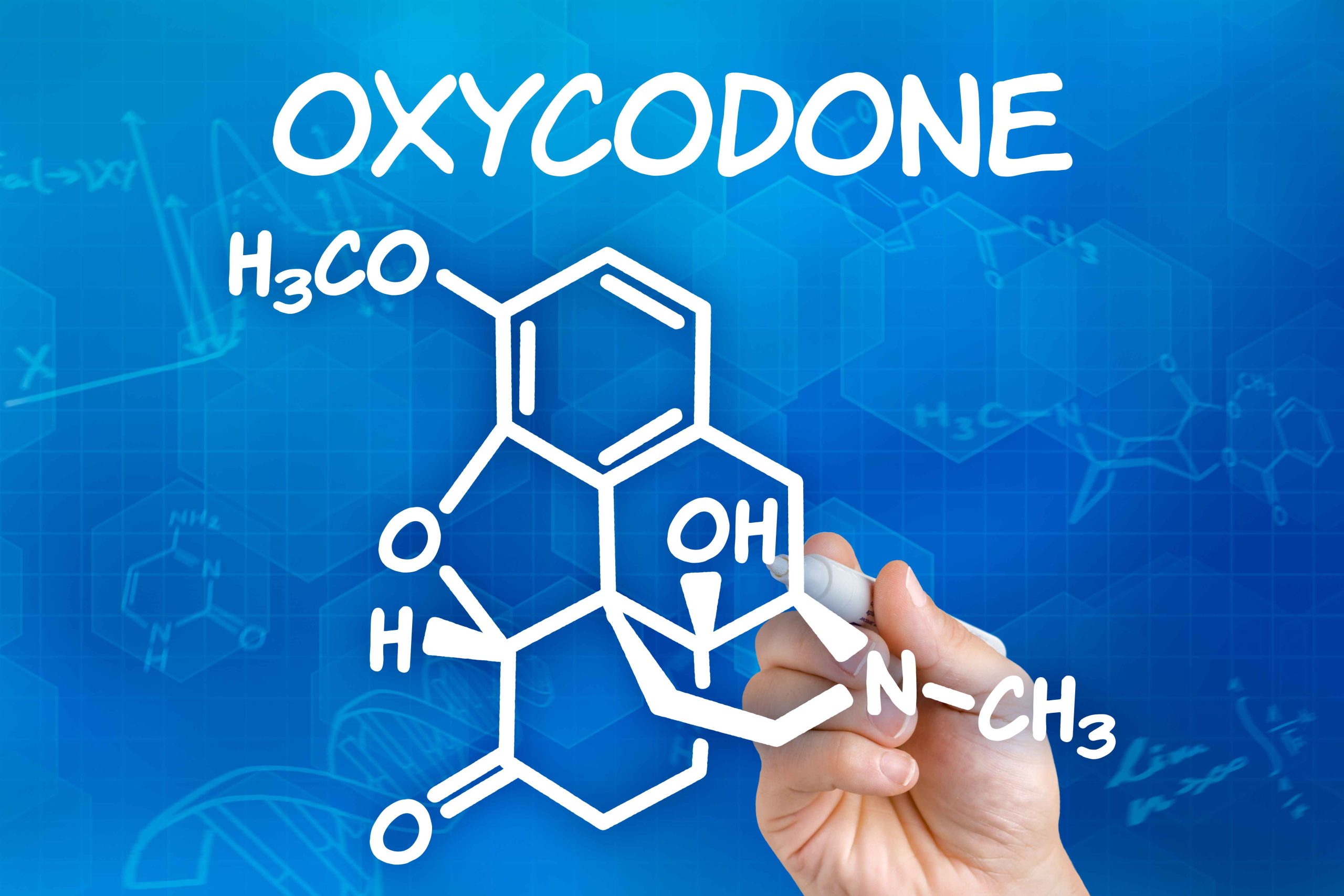
Ed smokes five cigarettes a day and wants to quit. Peter has become dependent on opioids and wants to break his addiction. David is ready to give up alcohol, which has taken over his life. All three men are considering quitting cold turkey. They are ready to be done with their addictions, so they want to stop using the substance immediately. Does quitting cold turkey work?
Is this a good idea? It might be ok for Ed, but Peter and David may want to reconsider.
Depending on their history of use, quitting cold turkey may be a shock to their systems and cause withdrawal. General withdrawal symptoms can include:1
- Cravings
- Headaches
- Shaking
- Nausea
- Anxiety
- Sleep issues
- Appetite changes
- Agitation
- Concentration issues
- Sadness
Can You Die from Quitting Cold Turkey?
With certain substances, withdrawal effects can be severe or even life-threatening. The body has become dependent on the drug, and an abrupt “cold turkey” approach could be dangerous if the person doesn’t receive treatment.
Here’s a breakdown of what happens with various types of substances:
Nicotine
There are no serious health risks if Ed wants to quit smoking cold turkey. However, he may have better success if he does this with support. A study found that only 3-5% of individuals who tried to quit cold turkey without help achieved long-term abstinence from nicotine.2
Alcohol
David has severe alcohol dependency. If he quits cold turkey, there are severe health risks. Alcohol withdrawal can include delirium tremens (DTs). These can start within two days of stopping alcohol cold turkey and can last up to five days. Without appropriate treatment, the mortality rate for DTs can be as high as 37%.3
DT symptoms can include:4
- Hallucinations
- Loss of consciousness
- Severe confusion
- Extreme hyperactivity
- High blood pressure
- Seizures
- Disruptions to cardiovascular function
Opioids
Like David, Peter may be putting his life in danger if he abruptly quits opioids without treatment. Opioid withdrawal typically causes flu-like symptoms. This includes vomiting and diarrhea. If severe, these can cause dehydration, which can lead to chances of heart failure.5
Other Drugs
Other drugs, such as meth and benzodiazepines, can cause similar withdrawal symptoms, including seizures, dehydration, heart issues, and psychotic reactions.6 If untreated, these can be life threatening.
Alternatives to Quitting Cold Turkey
Fortunately, there’s good news for Peter and David (and Ed, too). To avoid these physical dangers of quitting cold turkey, and to increase their chances of long-term success, they can turn to an alternative method of quitting the substance.
Their options include:
Tapering
Rather than stop taking opioids all at once, David can partner with a physician or other healthcare provider to taper off the drug. This involves slowly reducing the amount he takes over time until he eventually stops taking opioids completely.
The length of time it takes to taper off a drug depends on how long you’ve been using it and how much you’ve been using. It can take a few weeks or a few months to complete this process, but it can provide a safer and more effective long-term solution than quitting cold turkey.
Medication
To quit smoking, Ed can use nicotine replacement therapy (NRT). He may choose patches, sprays, or gum to prevent withdrawal symptoms. One study found that NRT can increase the chances of successfully quitting smoking by up to 70%.4
Medications are also available to help stop or reduce alcohol use. The FDA has approved acamprosate, naltrexone, and disulfiram for the treatment of alcohol use disorder. Disulfiram and naltrexone alter how alcohol is processed in the body to make drinking less appealing, and acamprosate can help ease withdrawal symptoms.7
Several drugs are also FDA-approved for the treatment of opioid use disorder: naltrexone, buprenorphine, and methadone.8 The use of these medications to stop using drugs or prevent relapse is known as medication-assisted treatment (MAT).
Medical Detox
To safely withdraw from drugs or alcohol, David and Peter can find a medical detox program. During medical detox, medical professionals offer treatment for withdrawal symptoms and provide 24/7 supervision to prevent complications. This may include sedation or other medications to help David get through the most severe, initial phase.
Medical detox usually lasts several days. When it’s complete, David’s body will be cleansed of alcohol, and he can begin his life of recovery. Medical detox programs are available for all types of substances, so Peter can also choose this method to detox from opioids.
Social Detox
This method can involve quitting cold turkey, but it’s done with support. If Peter’s symptoms aren’t life-threatening, he may find a social detox program where he can be monitored by professionals and receive counseling to help him through his withdrawal symptoms. This method does not involve the use of medication.
Cold Turkey Support
If Ed, Peter, or David choose to go “cold turkey,” it’s crucial that they get support. This may include formal services such as the medical detox described above, but it can also include other types of support. Many resources are available, including:
- Counseling
- Smartphone apps
- Support groups
- Medication
- Drug rehab programs
Does quitting cold turkey work? The bottom line: Yes, quitting cold turkey can work, but depending on the substance, you may need additional support to do so safely and effectively.
If you or someone you love is experiencing a substance use disorder, help is available. Call 800-934-1582(Sponsored) today to learn about your treatment options.
Sources:
- Withdrawal management. (2009, January 1). NCBI Bookshelf. https://www.ncbi.nlm.nih.gov/books/NBK310652/
- World Health Organization: WHO. (2023, January 4). No level of alcohol consumption is safe for our health. World Health Organization: WHO. https://www.who.int/europe/news/item/04-01-2023-no-level-of-alcohol-consumption-is-safe-for-our-health
- Rahman, A., & Paul, M. (2023, August 14). Delirium tremens. NCBI Bookshelf. https://www.ncbi.nlm.nih.gov/books/NBK482134/
- Rowden, A. (2021, March 23). The risks and benefits of quitting “cold turkey.” Medical News Today. https://www.medicalnewstoday.com/articles/is-it-bad-to-quit-cold-turkey
- Yes, people can die from opiate withdrawal. (n.d.). NDARC – National Drug and Alcohol Research Centre. Retrieved March 1, 2024, from https://ndarc.med.unsw.edu.au/blog/yes-people-can-die-opiate-withdrawal
- Ashenafi, W., Mengistie, B., Egata, G., & Berhane, Y. (2021). The role of intimate partner violence victimization during pregnancy on maternal postpartum depression in Eastern Ethiopia. SAGE Open Medicine, 9, 2050312121989493. https://doi.org/10.1177/2050312121989493
- Medications for alcohol dependence. (n.d.). WebMD. Retrieved March 1, 2024, from https://www.webmd.com/mental-health/addiction/features/fighting-alcoholism-with-medications
- (DCD), D. C. D. (2018, April 18). How do medications treat opioid addiction? HHS.Gov. https://www.hhs.gov/opioids/treatment/medications-to-treat-opioid-addiction/index.html

Lily never planned on becoming addicted to oxycodone. Instead, she’d planned on running a marathon. But her life took an unexpected turn when she tripped during a morning jog and injured her knee. The pain was intense, and her doctor prescribed oxycodone to manage that pain.
Unfortunately, the oxycodone wasn’t enough to control Lily’s agony. She took more than the recommended dosage several times, just to take the edge off. And even though she told herself she had nothing to worry about, Lily really liked the feelings of euphoria the drug provided. She couldn’t run anymore, so she was feeling depressed. She secretly welcomed the opioid high.
Oxycodone Addiction and Opioid Detox
Lily started taking more oxycodone pills – and she took them with increasing frequency. She needed more of the drug in order to make her feel the desired high. Then one day, she ran out of pills.
That’s when Lily got sick.
Her muscles cramped up, she had a headache, she felt nauseated, and she was sweating profusely. She searched her symptoms online and quickly realized she had become physically dependent on the opioid painkiller.
The steady supply of opioids was no longer there, and her body’s systems were reacting with a fierceness in the drug’s absence. Lily understood in that moment she experiencing oxycodone withdrawal.
Symptoms of Oxycodone Withdrawal
Some of the typical symptoms people experience when they quit oxycodone include:1
- Muscle cramps
- Vomiting and nausea
- Diarrhea
- Cold and hot flashes
- Anxiety
- Trouble sleeping
- Sweating
- Headache
- Watery eyes and nose
Note: It is possible to become physically dependent on oxycodone when you take it as prescribed. Your body gets used to the presence of the drug, so when you stop taking oxycodone, you can experience withdrawal.2
What Happens After You Quit Oxycodone?
How long do the withdrawal symptoms last once you quit oxycodone? The process usually unfolds in the following timeline:
- Days 1-2: Initial withdrawal: Symptoms usually start 8-12 hours after the last dose of oxycodone.
- Days 3-5: Intensified withdrawal: Symptoms are usually at their worse during this time. Muscle aches are common, along with shaking and cramps.
- Days 6-7: Psychological withdrawal: At this point, physical symptoms lessen, and psychological symptoms grow stronger. Depression and anxiety are common.
- Days 8 and beyond: Detoxed: After eight to 10 days, oxycodone has usually been purged from the body (detoxed). Physical symptoms are gone. However, psychological addiction may still be present. If this is the case, you should seek additional treatment.
Is it Safe to Stop Oxycodone Cold Turkey?
Because she ran out of pills, Lily abruptly stopped taking oxycodone. Quitting cold turkey like this can produce very distressing symptoms, both physical and emotional.
For people who have other health conditions, the body’s physical reaction can cause serious issues. Even in healthy individuals, severe vomiting and diarrhea can cause life-threatening dehydration. And many people start using the drug again in a desperate attempt to make the oxycodone withdrawal symptoms stop.
To prevent this unhealthy cycle, it is usually best to taper off oxycodone as part of a professional opioid addiction treatment program. This is what Lily decided to do.
What’s the Process of Weaning Off Oxycodone?
Lily consulted with her doctor to develop an oxycodone tapering plan that worked for her. This plan would slowly wean her off the drug, minimizing withdrawal symptoms and helping Lily adjust to daily life without oxycodone.
Tapering plans typically include the following important steps when weaning off oxycodone:1
- Flexible approach: The plan for tapering off oxycodone must consider the person’s risk, preferences, and goals.
- Initial decrease: The amount of the dosage decrease is less important than successfully achieving some form of initial decrease.
- Dose and interval: Tapering off oxycodone involves two separate processes: dose amount and the interval between doses. One or both can be adjusted throughout the weaning process.
- Slow progress: A slow taper is 5-10% dose reduction per month. This may be necessary if you’ve been using oxycodone for more than a year. A faster taper decreases doses by 10% per In extreme cases, where there is medical risk due to other conditions, a decrease of 30-50% may be appropriate. But this requires close monitoring.
- Scheduled dosing: If possible, it’s good to continue with the same dosing schedule. For example, if you’re used to taking prescribed oxycodone in the morning, continue to take it then.
- Pauses: Putting the tapering process on pause may be appropriate at some point in the process. This break gives you time to adjust to the new dosage and learn new coping skills.
- Progress: Tapering off oxycodone is considered a success as long as you’re making progress by reducing your oxycodone use.
- Support: During the weaning process, social support, mental health care, and physician supervision are important. Lily began seeing a counselor to help with her anxiety and depression.
- Healthy habits: Lily also benefited from developing ways to manage pain and maintain a healthier lifestyle. These included:
- Good sleep habits
- Healthy nutrition
- Physical activity
- Non-opioid pain medications
Medical Detox Helps You Successfully Quit Oxycodone
Sometimes, medications are used to help people detox from oxycodone. These FDA-approved treatments can help reduce oxycodone withdrawal symptoms and cravings. A healthcare provider prescribes the medication and closely monitors the patient’s progress. For some, this medical support can be the key for how to quit oxycodone.
Medical detox may involve one or more of the following medications:
- Buprenorphine: This is prescribed for moderate to severe oxycodone withdrawal. It reduces the person’s cravings for oxy and provides relief for withdrawal symptoms.3
- Methadone: This medication also reduces cravings and alleviates oxycodone withdrawal. It is used for medical detox from opioids that are longer acting, such as morphine.3
- Suboxone: This medication is a combination of buprenorphine and naloxone. It prevents cravings and blocks the intoxication effects of other opiates.4
- Other Medications: There are a number of drugs used during the detox process to treat withdrawal symptoms. Healthcare providers may prescribe medication to treat insomnia, nausea, diarrhea, and abdominal cramps. These may include temazepam, metoclopramide, and propantheline.3
Sources:
- Sarah.Rinn,. (n.d.). Tapering and discontinuing opioid use. Minnesota Opioid Guidelines. Retrieved November 29, 2023, from https://mn.gov/dhs/opip/opioid-guidelines/tapering-opioids/
- Doj/dea. (n.d.). Drugs of Abuse, A DEA resource guide (2020 edition). Retrieved November 30, 2023, from https://www.dea.gov/sites/default/files/2020-04/Drugs%20of%20Abuse%202020-Web%20Version-508%20compliant-4-24-20_0.pdf
- Withdrawal management. (2009, January 1). NCBI Bookshelf. https://www.ncbi.nlm.nih.gov/books/NBK310652/
- Grinspoon, P. (2018, March 20). 5 myths about using Suboxone to treat opiate addiction. Harvard Health. https://www.health.harvard.edu/blog/5-myths-about-using-suboxone-to-treat-opiate-addiction-2018032014496

Suboxone withdrawal is worse than heroin withdrawal.
No one has ever been able to successfully taper off Suboxone.
Tapering off Suboxone is something that’s shrouded in both mystery and myth. While the thought of stopping the medication certainly generates a bit of anxiety, the unknowns and “what ifs” are truly the drivers of fear. What will it feel like when your Suboxone dose is decreased? Will it feel like you’re in withdrawal 24/7? Will anyone help you if the taper is going too fast?
By answering the what ifs and shining a light on the unknowns, tapering off Suboxone suddenly becomes a lot less frightening. Once the fear is under control, you’re free to play a leading role in your own recovery process.
What is a Suboxone Taper?
 First thing’s first; let’s talk about what a Suboxone taper is and why it’s so important. Tapering is defined as gradually discontinuing or reducing the dose of a particular drug required by a patient over a prolonged period of time. Pay close attention to those last six words: “…over a prolonged period of time.”
First thing’s first; let’s talk about what a Suboxone taper is and why it’s so important. Tapering is defined as gradually discontinuing or reducing the dose of a particular drug required by a patient over a prolonged period of time. Pay close attention to those last six words: “…over a prolonged period of time.”
The process of tapering is, by definition, meant to be slow.
Suboxone is an FDA-approved medication that has changed the way opioid addiction is treated. Its unique combination of two distinctive chemical compounds – buprenorphine and naloxone – give it the ability to virtually eliminate opioid withdrawal symptoms and minimize the risk of abuse. It takes time to recover from opioid use disorders, so most patients take Suboxone for an extended period of time.
Since buprenorphine is a partial opioid agonist, it does carry a risk of dependency. Given this risk, when you’re ready to stop taking Suboxone, a supervised taper is always recommended.
Trying to quit “cold turkey” without assistance can be dangerous and cause painful withdrawal symptoms, both of which increase your odds of relapse. A supervised taper, on the other hand, significantly lowers or eliminates withdrawal symptoms and prepares your body for life beyond Suboxone.
What to Expect During a Suboxone Taper
The road to a successful Suboxone taper begins with open, honest dialogue between you and your clinician. From those conversations, you will work together to develop a plan to reduce the amount of Suboxone you take. The result is a tapering schedule that is highly individualized and focused on your personal needs instead of being focused on adherence to one specific approach.
Your dosage can be lowered a little bit at a time over several days, weeks, or even months. According to the National Alliance of Advocates for Buprenorphine Treatment (NAABT), Suboxone should generally be lowered in increments of 2 mg at a time every few days. Keep in mind, however, this progress relies on your level of dependence and individual experience. If you’re on a well-structured tapering schedule, you should only feel mild withdrawal symptoms for a few days following a reduction in dose.
If, at any point during the taper, your withdrawal symptoms or cravings become more intense, talk to your clinician. He or she can readjust your dose or slow the taper. You may need to go back to a previous dosage level in order to stabilize or increase the amount of time in between dosage reductions.
In some cases, a medication called Naltrexone may be used after you’ve tapered off Suboxone. Naltrexone is an opioid antagonist medication that works by blocking the effects of opioids. When used after the Suboxone tapering process, it offers additional anti-craving properties that can strengthen long-term sobriety. If used before the Suboxone taper is complete, however, Naltrexone can cause precipitated withdrawal.
Getting Help With Your Suboxone Taper
Some people might tell you that getting off Suboxone is impossible – that no one can handle the withdrawals or function without the medication. Thankfully, that isn’t true. With proper treatment and support, you can successfully taper off Suboxone.
 How do we prevent opioid-related deaths?
How do we prevent opioid-related deaths?
Opioid-related overdose deaths continue to rise. But the public doesn’t want to deal with the problem in their city. Data from the Centers for Disease Control and Prevention show that overdose deaths rose nearly 30 percent in 2021.
The pandemic has only exacerbated the opioid crisis. And the crisis doesn’t have an end in sight, as newer, more potent opioids hit the street.
Public health officials are scrambling for solutions and agencies are increasing access to medication-assisted treatment. Communities are still largely opposed to methadone clinics in their town or city. This line of thinking is called “Not In My Neighborhood,” which is known by its acronym: NIMBY.
The only thing it’s doing is creating barriers to public health harm reduction efforts for the opioid epidemic.
Harm Reduction Helps Prevent Opioid-Related Deaths
 Harm reduction services like methadone clinics, safety syringe exchanges, and even safe consumption sites are resisted in almost every city.
Harm reduction services like methadone clinics, safety syringe exchanges, and even safe consumption sites are resisted in almost every city.
Sophia lives in New York City. She believes that the implementation of a safe consumption site is a disaster to the city.
“New York is already rife with addiction,” she says. “Bringing a ‘safe consumption site’ will only encourage addicts to swarm neighborhoods to use drugs, bringing crime, violence, and antisocial behavior to the city. I don’t want anything like that in my neighborhood!”
Those concerns are valid, and public safety concerns are important. However, Sophia does not get the full picture. However, medical professionals and researchers are working to shed light on the issue.
The Real Help of Harm Reduction
Dr. C. Debra M. Furr-Holden is an associate professor in the Bloomberg School of Public Health’s Department of Mental Health. She studies the effects of treatment centers on crime. Her Johns Hopkins Bloomberg School of Public Health research suggests there may actually be less serious crime near clinics than other community businesses. In fact, the research shows that drug treatment centers actually attract less crime than liquor stores and convenience stores.
Kathryn Stadeli is a surgical resident at the University of Washington. She is acutely aware of the effects of opioid-related overdoses in the state of Washington. She tells the Seattle Times that overdose-related deaths from fentanyl rose 70 percent in 2018 compared to the previous year.
Stadeli sees many of these deaths firsthand. She feels powerless over them.
“Unfortunately, opioid use disorder (commonly known as addiction) is not a disease I can cut away with a scalpel,” she says.
She suggests, however, that the use of certain medications can reduce the rate of opioid-related deaths by a staggering 50 percent. This method of treating opioid addiction is known as — known as medication-assisted treatment.
The problem: access.
Seattle, like many other cities, needs more medication-assisted treatment centers, like methadone clinics.
Stadeli talks about “Sarah,” whom she treated for a potentially deadly skin infection from injecting opioids. She explains that Sarah developed opioid use disorder after taking oxycodone for a sports injury. Like millions of other Americans who weren’t able to refill their prescription, Sarah turned to injecting heroin and fentanyl.
“I held her trembling hand as we wheeled her to the operating room; the fear invading her beautiful brown eyes when she asked me if she was going to die still haunts me,” Stadeli recalls.
Sarah had struggled to quit using on her own. Despite desperately wanting help, her situation and lack of housing meant that she wasn’t able to access the treatment she needed. Tragically, Sarah died from that infection shortly after her encounter with Stradeli.
“She was 22, and opioids killed her. Deaths like hers are preventable and unacceptable,” says the surgical resident.
The Benefits of Harm Reduction Services
Stadeli underscores the already substantial empirical evidence that that MAT is a far more successful treatment of opioid use disorder than alternatives, like rehab, resulting in less likelihood of overdoses. Those aren’t the only benefits.
The Substance Abuse and Mental Health Services Administration (SAMHSA) demonstrated that medication-assisted treatment:
- Improves patient survival
- Increases retention in treatment
- Decreases illicit opioid use and other criminal activities among people with substance use disorders
- Improves birth outcomes among pregnant women with substance use disorders
- Increases patients’ ability to gain and maintain employment
Yet, stereotypes about people who need medication, like methadone, persist. This stigma is a major barrier to treatment. This is why less than 10 percent of those with substance use disorder get the help they need.
In fact, research from the Recovery Research Institute shows that this stigma impacts the quality of care and how people with substance use disorders are treated.
Reducing Stigma to Prevent Opioid-Related Deaths
 Given that level of stigma, it’s understandable why folks don’t seek help. And trying to quit on their own is an uphill battle with low rates of success. Added to that stigma is the public perception of bringing medication-assisted treatment centers to their communities, like Sophia mentioned.
Given that level of stigma, it’s understandable why folks don’t seek help. And trying to quit on their own is an uphill battle with low rates of success. Added to that stigma is the public perception of bringing medication-assisted treatment centers to their communities, like Sophia mentioned.
Yet the evidence, like in Furr-Holden’s study shows the opposite to be true. Harm reduction facilities, like syringe exchange programs, methadone clinics, and other treatment facilities actually reduce the burden on the local economy by:
- Lowering rates of transmissible diseases, like HIV and hepatitis B and hepatitis C
- Reduce emergency department admissions
- Increased life expectancy and reduces overdose
- Improved access to treatment facilities and subsequently recovery
- Provided access to other critical services like housing and medical care
- Decreased the likelihood of engaging in criminal activities
- Reduced use of opioids
- Improved the likelihood of obtaining housing and employment
- Improves birth outcomes
Despite these overwhelmingly positive outcomes, being treated with methadone is still highly stigmatized. Most patients feel like they’re “dirty” for accessing this help.
How Can Destigmatizing Harm Reduction Services Prevent Opioid-Related Deaths?
Sarah Church, PhD, is the executive director of the division of substance abuse at the Albert Einstein College of Medicine. She mentions a quote from her colleagues, Murphy and Irwin, in a recent training:
After ten years of interviewing women and men in various stages of their methadone maintenance careers, recurring themes emerged, one of which was that being a methadone patient is a marginal identity; not quite junkie, not quite conventional. Clients’ efforts to manage this stigmatized identity were often shrouded in anguish and secrecy. Methadone patients were in a kind of identity limbo; a holding pattern between two extremely different social worlds. They were trying to affect an identity transformation; however, in many circumstances they were still associated with and defined by their ‘dirty secret.’
Prevent Deaths by Preventing NIMBY-ism
So, why we are still stigmatizing and resisting the very solutions to the opioid crisis because we don’t want it in our neighborhood?
Many would argue that, perhaps the solution to the opioid crisis isn’t only an increase in treatment facilities, particularly medication-assisted treatment facilities, but also the critical work of destigmatizing people with mental health disorders? What are your thoughts on the issue?
If you or someone you love is experiencing a substance use disorder, help is available. Call 800-934-1582(Sponsored) today.
 If you happen to be in Australia this month, you might encounter Benny and Frankie. Benny will be the one pushing the three-wheeled pack-cart. Frankie will be the one on the leash.
If you happen to be in Australia this month, you might encounter Benny and Frankie. Benny will be the one pushing the three-wheeled pack-cart. Frankie will be the one on the leash.
This pair are making their way across the country on foot and paw. But they’re not doing it just for the exercise or to take in the scenery
Why are these two on a trek across the outback?
It’s all about addiction recovery.
“Not Without My Best Mate” – a Journey to Pet-Friendly Rehab
Benny knew he had become addicted to cocaine and cannabis. He knew he needed rehab. But when his family urged him to go, he just couldn’t do it without his best friend, Frankie.
For Benny, leaving his dog behind wasn’t an option. And while there are some recovery centers around the world that welcome pets, they aren’t on every corner. If you want to bring your pet with you to rehab, you may have to travel far from home and pay more for the treatment.
Benny decided to create his own solution. He and Frankie would take a recovery journey together. They would walk across the world, and use the experience to heal.
“An Impossible Task”
 The plan: walk from one side of Australia to the other. Then, they’ll take their trek across the globe. Benny and Frankie will make their way to Bangkok and Beijing and ultimately end their journey in Alaska.
The plan: walk from one side of Australia to the other. Then, they’ll take their trek across the globe. Benny and Frankie will make their way to Bangkok and Beijing and ultimately end their journey in Alaska.
As of early April, the duo had been on the road for more than 100 days, making their way from Sydney to Darwin. They plan to reach this first milestone around July.
“It’s tough, but I wanted to experience the extremities of Australia,” Benny said. “I’ve set an impossible task, and I’m out to prove it is possible.”
“Unconventional Recovery”
Benny is on this journey for his own recovery, but he has another goal that reaches far beyond himself. He wants to create a pet-friendly rehab center.
He says the connection between owners and their pets shouldn’t be undervalued. “Having something to love and something loving you is a big part of your recovery,” he explains. “It’s a responsibility to wake up for every day. I’m trying to paint a path for an unconventional method to recovery … a pet-friendly recovery center.”
His plan is to open a recovery center that embraces this connection and welcomes pets along with their owners.
Benny has created the charity Walk2Recovery to back his efforts. The charity’s aim is to open the pet-friendly rehab center as well as raise awareness about addiction and recovery.
The Kindness of Strangers
Benny’s family met him and Frankie at their halfway point in Longreach. His mom noted, “I firmly believe that he’s conquered something in himself and he’s well on the way to recovery.”
But this isn’t the only support Benny and Frankie are feeling. Along their way, people have paid for their accommodations, invited them to stay in their homes, given them meals, or provided other support. Across the continent, people are taking an interest in Benny’s efforts.
Benny says it has been this kindness of strangers that has “kept him going on days when he felt he couldn’t go any further.”
He admits, “I get a lot of energy back [from people I meet] and it gives me the energy to keep going.”
Pet-Friendly Rehab: The Science Behind the Journey
 It turns out, Benny’s idea of pet-friendly rehab may be unconventional, but it’s actually backed by scientific evidence.
It turns out, Benny’s idea of pet-friendly rehab may be unconventional, but it’s actually backed by scientific evidence.
Researchers have found that getting out in nature is good for us. It’s associated with increases in happiness, well-being, positive emotions, a sense of meaning and life purpose, and a decrease in mental distress.
And, they’ve found that trekking to remote locations seems to offer the most benefit.
And what about Frankie? He’s important too, researchers say. Dogs have played an important role in helping people with disabilities, illness, addiction, and other conditions since the 1860s.
Interacting with a dog can help restore natural functioning of a brain that has been altered by drug use. It raises dopamine levels (the “happy” chemical in the brain that is boosted by cocaine and other drugs). So, a four-legged friend can provide a healthy way to achieve a “high” – reducing the owner’s dependence on drugs.
The overall effects of owning a dog can help lower anxiety levels, alleviate depression, and build a sense of self-worth for their owners. And dogs can help people in recovery stay active and reduce loneliness.
Studies have also found that including dogs in therapy can give clinicians greater insight into their owners. Guided interactions with dogs during therapy can also help patients change thought and behavior patterns.
Wow – talk about a positive influence! It sounds like Benny was wise to keep Frankie by his side. And he was right in more ways than one when he said it simply:
“Frankie is my best mate.”
Get help today at 800-934-1582(Sponsored) to learn about treatment programs for drug and alcohol addiction.
 You may know him as a young John Conner in Terminator 3: Rise of the Machines. Or you may recognize him as the child actor who co-starred with Mel Gibson in Man Without a Face in 1993.
You may know him as a young John Conner in Terminator 3: Rise of the Machines. Or you may recognize him as the child actor who co-starred with Mel Gibson in Man Without a Face in 1993.
Nick Stahl began performing at age 4 and was recruited by Hollywood at age 10. He was just 11 when Gibson discovered Nick’s talent, and his career took off from there.
And it was just two years later, at age 13, that Stahl discovered alcohol.
But let’s back up a bit.
Looking back at his childhood, Stahl gains some insight into why the stage was so appealing – and why alcohol was so appealing at a young age, too.
A Blanket of Fear
 Stahl was raised by a single mom who worked two jobs to make ends meet.
Stahl was raised by a single mom who worked two jobs to make ends meet.
Stahl recalls, “From a very young age, I was always under this blanket of fear, financial fear. There was this idea that if we didn’t come up with enough money for that month, we would end up on the street. That colored my outlook growing up. My default mode was untrusting, with this mentality of waiting for the other shoe to drop.”
“I don’t look back on my childhood with real fond memories,” he says. “But for some reason, when I did plays, that stuff shut off and I had this ability to just be very comfortable.”
And when he had his first drink at 13, he discovered a way to “shut stuff off” when he wasn’t on stage. The tense feelings disappeared.
“Suddenly, I had a freedom from thinking, from uncomfortability,” he explains. “I felt okay in my skin — and I hadn’t really felt that before.”
Full Steam Ahead
By age 16, Stahl’s career was in full gear, and he and his mother moved to Los Angeles. There, he discovered the party scene.
He recalls, “I was going to bars. I had a very easy time getting into these places. A lot of my friends were older, and I had a great time.”
It wasn’t long before he was smoking weed. And from there, he moved on to pills, cocaine, and meth.
“That became what I chased,” he says. For Stahl, the drugs alleviated anxiety. He wasn’t partying for fun, but for release. He explains, “Very early on, it was not ‘I want this,’ but ‘I need this.’”
Falling Apart
In 2001, Stahl starred in Bully, a true-crime drama. Brad Renfro, his co-star, also battled addiction at the time.
Stahl recalls, “He was more severe in his addiction than I was. He just progressed to a point where he had to have someone on set with him to keep him sober.”
Stahl knew he was headed in the same direction. He tried to stop the deadly addiction train he was on.
“Throughout my 20s, I experimented with different ways to regulate my drinking. Maybe LA is the issue, right? So, I’d move. Maybe these certain friends I’m hanging out with, maybe that’s the issue. So, I’d get new friends.”
But none of that worked.
“Things started to get awful pretty quickly,” Stahl recalls. “I started to miss appointments. I put on a good front. The extent of my illness stayed hidden even from me. It’s common to justify, rationalize things. I looked around and said, ‘Everyone is partying the way I am.’ In retrospect, there were far less people going as hard as I did.”
In 2007, at age 27, Stahl entered rehab for the first time. In 2009, he tried again.
After two failed attempts at recovering from addiction in LA, Stahl moved back to his home state of Texas.
But Stahl couldn’t stay away from Hollywood for long. He went back – and was arrested multiple times. The charges included disorderly conduct and possession of meth.
Picking Up the Pieces in Recovering from Addiction
Despite his struggles, Stahl never lost an acting job. He was able to hold it together enough that he never got fired. But he knew he would soon, if something didn’t change. In 2012, he knew it was time to step away from acting for a while.
“I was physically there, but I was checked out,” he admits, “and I certainly wasn’t feeling any real enthusiasm for acting anymore. I knew that I had to step away, for self-preservation, but also for the preservation of my career, if I was going to have one again.”
Stahl spent the next five years in Dallas, “diving into his recovery” as he puts it.
“I didn’t think it would be easy, but it proved to be even more difficult than I thought it would be,” he says. “It’s hard to put my finger on what shifted. If I hit bumps in the road, I always got up and tried again. Luckily, I was resilient…One day, it just kind of stuck.”
Once he achieved sobriety, Stahl was able to give his life new direction. “It proved to be reconstructive for me,” he says. “That’s when I really started to piece together that I had neglected building a real life outside of the business. For many years, I had everything — but I didn’t have anything resembling a satisfying life. I didn’t have outside interests, I lost touch with friends and family. The film world made up too much of my identity.”
A New Life While Recovering from Addiction
When Stahl stepped away from Hollywood while recovering from addiction, he didn’t leave with millions in the bank. That meant he had to get a job like any other Joe. “So, I started working for a friend’s moving company,” he says.
 “I tried other things. I worked at a coffee shop in New York for a little bit. Not only did I learn how to live as a sober person, which I didn’t know how to do, but I learned how to have a life outside the business.”
“I tried other things. I worked at a coffee shop in New York for a little bit. Not only did I learn how to live as a sober person, which I didn’t know how to do, but I learned how to have a life outside the business.”
And this fresh perspective has allowed Stahl to re-enter show business with a healthy, sober outlook. “That passion inside me that burned for film and acting, it had dulled progressively over time,” he explains.
“But once I was separated from Hollywood, all of that started to come back. Over the past few years, whether I’m working on a film or auditioning, I don’t take it for granted, ever. I work much harder at it now. I just feel a renewed love for it.”
Clean for four years now, Stahl, age 41, is back in action with a full line-up of acting roles on his calendar.
But recovering from addiction comes first. “Recovery has to be the most important thing for me,” he says. “I put it first in my life. But I’m grateful for it, and it’s given me the opportunity to try to help people in the same situation I was [in]. It’s more important to me than making films. I search out people who have had similar struggles and show them how I got well. I speak from my experience and show them what worked for me.”
If you or someone you love is experiencing a substance use disorder, help is available. Call 800-934-1582(Sponsored) today.

80 members of Temple Sinai gathered for a Zoom call to hear their spiritual leader’s announcement.
They thought Rabbi Perice might have called the meeting to share that he and his wife were having a baby. Or that they were buying a home.
Or maybe that he was leaving his post.
Instead, he disclosed to his congregation that he’d been in recovery from opioid addiction for 10 years.
Perice explained that he shared this “because they trust me every day with the most vulnerable parts of their lives. What would it mean if I couldn’t trust them the way they trust me?”
Tearing Down the Stigma in Talking about Opioid Addiction
 “When the rabbi told me in advance what he wanted to say, I thought it was a great idea,” said Johanna Schoss, president of the Temple Sinai board.
“When the rabbi told me in advance what he wanted to say, I thought it was a great idea,” said Johanna Schoss, president of the Temple Sinai board.
“For someone like the leader of our community, for whom people already have a lot of respect, to admit to having gone through a situation like this, it means that other people don’t have to be afraid to talk about it.”
“Addiction is still something that is thought of as taboo, but if our rabbi and our community can help in any way, it’s huge,” said past board president Stacey Blacker.
With this support and encouragement from leadership, Perice moved forward with his announcement. And the positive response has been overwhelming.
“I was overwhelmed by the support that this community showed me,” Perice said. “I’ve heard from probably 50 people, sharing personal stories, congratulations, all the nice things you would hope to hear after sharing something like this.”
Perice hopes Temple Sinai can get involved in addiction and recovery efforts through education and advocacy–like talking about opioid addiction. He knows firsthand how important the right support can be.
A Fateful Collision
It started in 2007, with a simple car accident. Perice was rear-ended and suffered shoulder, neck, and lower back injuries. His doctor prescribed pain pills, which Perice took as directed – at first.
“It didn’t just seemingly fix the pain at first. I had been dealing with anxiety and depression, and [the drug] gave me almost a sense of peace. It took away the angst about college and jobs. And something in my brain said, ‘I need more of this.’”
Perice upped his dosage. But the physical pain worsened and his addiction grew. When his doctor refused to prescribe any more painkillers, he began doctor shopping. And that’s when his life began to revolve around fending off withdrawal.
“I told myself, ‘I can’t be an addict,’” he said. “I was getting it from a doctor. I had legitimate pain. How can I be an addict? But after two years went by, doctors were no longer close to prescribing what I needed.”
“I needed to find other ways — calling friends and acquaintances, going into medicine cabinets and checking wherever I could get it. That’s when I was introduced to OxyContin, which is a very powerful opiate. That was the medication I was most actively using until the end.”
A Fateful Moment of Clarity in Talking about Opioid Addiction
In 2011, Perice’s life took a turn. One day in early spring, he ran out of OxyContin. He couldn’t find anyone who had the drug.
He was desperate to relieve his withdrawal. So, he called a known drug source and told him “I need something, anything.”
An hour later, the man brought Perice a bag of heroin.
Perice had never done heroin before. He sat in his bathroom, staring at the bag.
“It was a moment I can only describe as a moment of clarity. I was able to see that if I did this, I might die. I just flushed it down the toilet, called my parents, and said, ‘I need help.’”
He got treatment, which included a long-term medically assisted outpatient treatment, counseling, and physical therapy.
A New Path
Perice admitted, “Treatment saved me, but it didn’t give my life purpose. Re-finding my faith gave me purpose.”
 Once he was “liberated from opioids” as he put it, Perice began considering the rabbinate. He entered Reconstructionist Rabbinical College in 2014 and was ordained in 2020.
Once he was “liberated from opioids” as he put it, Perice began considering the rabbinate. He entered Reconstructionist Rabbinical College in 2014 and was ordained in 2020.
He became the religious leader at Temple Sinai within a month of ordination.
After serving there for several months, Perice decided to share his secret with his congregation. And he’s glad he did. He described it as “a very powerful moment for me, and for my community.”
He added:
“But there are a lot of feelings about the issue [of addiction] in the world. Many people have dealt with this in their families. Addiction causes pain for everyone around [the person living in addiction].”
“So, it’s important to help people move through that pain. By removing the stigma and getting people help early, we can help them, and their families, heal.”
If you or someone you love is experiencing a substance use disorder, help is available. Call 800-934-1582(Sponsored) today.
 Over 93,000 Americans died from an opioid overdose in 2020, which is a 30 percent increase from the previous year. The effects of fentanyl are the root cause behind this increase. It is a powerful synthetic opioid that is infiltrating the drug supply.
Over 93,000 Americans died from an opioid overdose in 2020, which is a 30 percent increase from the previous year. The effects of fentanyl are the root cause behind this increase. It is a powerful synthetic opioid that is infiltrating the drug supply.
Americans are buying other drugs, like cocaine or benzodiazepines, that have been laced with fentanyl. Because the effects of fentanyl are so powerful, it is killing record numbers of unsuspecting Americans.
Fentanyl is not only potent but also difficult to identify. Given the social restrictions and heightened stress during the pandemic, more and more people had been susceptible to this deadly drug.
In this blog, we’ll explain why fentanyl is so dangerous, how to spot it in your drugs, and what to do if you suspect someone is having an opioid-related overdose.
What Is Fentanyl?
Fentanyl is a powerful synthetic opioid that is 50 times stronger than heroin and 100 times stronger than morphine. It has been used medicinally to treat chronic pain following surgery or in patients with cancer since 1968. Fentanyl is also illicitly manufactured for the drug market for those seeking a more powerful high than heroin.
Street fentanyl is either injected in its liquid form, smoked, or inhaled. Street names for fentanyl include:
- Murder 8
- Apache
- Dance Fever
- Jackpot
- Friend
- Goodfellas
- Tango and Cash
The typical effects of fentanyl are similar to heroin, and include:
- Euphoria
- Relaxation
- Pain relief
- Sedation
- Confusion
- Nausea and/or vomiting
- Dizziness
- Drowsiness
- Pupil constriction
- Risk of overdose and death
There is another contributing factor to the rise in fentanyl use. Drug manufacturers are cutting other drugs with fentanyl to cut down on costs while making the laced drugs more powerful and addictive.
What Does Fentanyl Look Like?
Prescription fentanyl is usually a patch worn on the skin. Illicitly manufactured fentanyl is available in a powder or liquid form. The powder is either white, gray, or tan-colored.
Unfortunately, when fentanyl is powdered, it’s difficult to differentiate it from other powdered drugs, like cocaine. And the liquid can be hidden in unassuming everyday items like nasal sprays, eye drops, and even candy.
Why Is Fentanyl So Dangerous?
According to the CDC, fentanyl and other synthetic opioids are the most common drugs involved in overdose deaths.
The CDC reports that over 150 people die from opioid overdoses from synthetic opioids like fentanyl every day.
The problem with fentanyl is two-fold: Its potency and the incentive of illicit drug manufacturers to cut other drugs with fentanyl to make more money.
People are buying illicit drugs like methamphetamine, cocaine, heroin, and pills (like opioids and benzodiazepines) completely unaware that their drugs are contaminated with fentanyl. What’s more, the amount of fentanyl in the drug could be a lethal dose that you can’t taste, smell, or see.
To make matters worse, rates of fentanyl infiltrating the drug supply continue to rise.
According to the Office of National Drug Control Policy, the rate of fentanyl-related overdoses has risen six-fold since 2014.
Fentanyl was involved in a staggering 62 percent of opioid deaths in 2020. Illicit manufacturers have been able to achieve exponential distribution across the country.
Previously, fentanyl was common in the northeast, midwest, and mid-Atlantic and now it is showing up in other parts of the country.
Why Did Overdose Deaths Surge During the Pandemic?
Fentanyl-related deaths have also been exacerbated by the pandemic. People struggled to access harm reduction programs that enabled them to test their drugs and access recovery resources.
This led many to return to using to cope with the stress, anxiety, and social isolation of the pandemic.
While the pandemic is beginning to wane, many people are burned out and struggling to cope with the economic burdens and the loss of loved ones that the pandemic left in its wake. These factors alone are a risk for overdose but taken together, they reflect one of the many tragedies of COVID-19 — the staggering rise of overdose deaths.
How Much Fentanyl Is Fatal?
It takes just two milligrams of fentanyl to kill, according to the Drug Enforcement Administration (DEA). You may think you’re safe because you don’t take opioids, but you’d be mistaken.
In recent seizures, the DEA found that 42 percent of counterfeit pills contain 0.2 to 5.1 milligrams of fentanyl.
Fentanyl is usually distributed by drug organizations by the kilogram. This amount could kill a staggering 500,000 Americans.
What Are the Signs of an Overdose?
Whether you’re taking a prescribed opioid, or an illicit substance, you should be aware of the signs of overdose because you could save someone’s life.
The common signs of overdose the CDC advises to look out for include:
- Shallow, weak, or no breathing
- Small pinpoint pupils
- Falling asleep or losing consciousness
- Limp body
- Choking or gurgling sounds
- Cold and/or clammy skin
- Discolored skin, especially on the lips and nails
What to Do If You Think Someone Is Overdosing
If you suspect someone is overdosing you should act quickly, by:
- Calling 911 immediately
- Administering the overdose reversal drug, naloxone
- Try to keep the person awake and breaking
- Lay the person on their side to prevent choking
- Stay with the person until the emergency services arrive
Naloxone (or brand name Narcan) is available in all 50 states. It is available from most pharmacies without a prescription. You can also get it for free from many recovery centers, outreach, and harm reduction programs.
It is very simple to use and will save a life.
How Can I Check My Drugs for Fentanyl?
It is possible to test your drugs for fentanyl and other potent opioids like carfentanil by using fentanyl test strips. You can either buy or find it at your nearest harm reduction service center. The test takes just 5 minutes and could save you from the harmful effects of fentanyl.
Fentanyl Myths
On TV dramas, cops come out in hazmat suits because they fear they’ll die from touching fentanyl. However, much of the media has misrepresented what happens when you come into contact with fentanyl.
The Harm Reduction Coalition has dispelled many of these myths, such as:
- You cannot overdose by simply touching powdered fentanyl. It must either enter your bloodstream or mucus membrane — body cavities like the nose, mouth, lungs, and stomach — for you to feel any of the effects of fentanyl.
- Fentanyl and its analogues, such as carfentanil, are not resistant to naloxone. Fentanyl is an opioid and therefore naloxone will respond to a fentanyl-related overdose. When people don’t respond to naloxone, it is because you haven’t waited long enough. (Fact: You need to wait two to three minutes. After, if still unresponsive, the person needs more than one dose).
- Fentanyl patches are not the same formulation as illicitly manufactured fentanyl. They are specially formulated for pain management — it takes 12 to 24 hours to receive adequate pain relief.
Ways to Reduce the Risk of Overdose from the Effects of Fentanyl
 While treatment is the preferred course of action for addiction, you may not be ready for recovery. Or, you may be concerned for a loved one who uses alone.
While treatment is the preferred course of action for addiction, you may not be ready for recovery. Or, you may be concerned for a loved one who uses alone.
This is where harm reduction practices apply. The following precautions can reduce the risk of overdose:
- Always carry naloxone
- Eat, drink, rest, and hydrate as best you can
- Make an overdose plan with a friend
- Use less and more slowly because fentanyl is very powerful
- Test your drugs
- Use one drug at a time
- Avoid taking alcohol with opioids
- If you do use alone, ensure someone knows where you are
- Be cautious of your tolerance, especially if you have recently taken a break from drug use. If in doubt, try a tester amount
- Use a different method of ingestion, such as snorting instead of injecting
If you or someone you love is experiencing a substance use disorder, help is available. Call 800-934-1582(Sponsored) today.
 Eight days ago, Angela was in rehab. Now she’s completely off heroin and has an impressive five weeks of sobriety under her belt. She has a new job and a new apartment. But things are starting to get a little more stressful than she thought they’d be — so many changes, so many new responsibilities.
Eight days ago, Angela was in rehab. Now she’s completely off heroin and has an impressive five weeks of sobriety under her belt. She has a new job and a new apartment. But things are starting to get a little more stressful than she thought they’d be — so many changes, so many new responsibilities.
One night after work, Angela’s stress became too much to handle. She could feel herself slipping. Her mind was overcome by cravings.
In an instant, that familiar voice in her head reappeared. “You just need a little something to take the edge off — something to help you relax. It’s just this one time. No big deal. You can go back to being sober tomorrow.”
Three hours later, Angela woke up in a hospital bed. She’d overdosed on heroin. Fortunately for Angela, she was saved when a neighbor found her unconscious and barely breathing in their apartment complex hallway. EMTs were able to revive her from the overdose.
Many others aren’t so lucky.
The Heightened Risk of an Overdose After Rehab
 When Angela entered rehab, she stopped using opioids. Before rehab, she had been using drugs for two years. During those two years, her body built up a tolerance for opioids. Eventually, she needed a much bigger dose to keep getting the same effect from the drugs.
When Angela entered rehab, she stopped using opioids. Before rehab, she had been using drugs for two years. During those two years, her body built up a tolerance for opioids. Eventually, she needed a much bigger dose to keep getting the same effect from the drugs.
Fresh out of rehab, Angela had been drug-free for weeks. Her body had returned to a normal, healthy state. And that can be dangerous.
Angela’s systems weren’t constantly interacting with and reacting to the effects of opioids. That means she no longer had the same tolerance she’d built up before entering treatment.
But Angela wasn’t thinking about detox, tolerance levels, or the potential of an overdose. So, she took the same dose of heroin she was using right before rehab. And her body went into shock.
She hit her body with an amount of heroin it was no longer used to, and her system couldn’t handle it. So, it started shutting down.
The result: an overdose that nearly killed her.
The Common Story of Overdosing After Rehab
Angela’s situation isn’t unusual. After leaving rehab, many people return to their old habits. And while their habits haven’t changed, their bodies and tolerance levels have.
When people relapse after treatment, they often make the mistake of thinking they can take the same dose they used pre-rehab. They don’t realize that dose could now be fatal, and they end up overdosing.
Some people get lucky and survive the overdose. But many don’t.
Top Reasons for a Post-Rehab Overdose
Angela looked to opioids to help her cope with stress. This is a common reason for overdose after rehab. Whether at home or work, stress builds up, and the person who is addicted feels they can’t cope with everything without using substances.
Here are five other common mindsets that can lead to a post-rehab overdose:
- Just One More Time:
Jeff wanted to take his life in a new direction. He hadn’t taken any pills in weeks.
But, when he ran into an old friend who invited him over, he knew what they would end up doing. “Why not?” he thought. “I might never see him again. One last time can’t hurt.”
But, yes, it can. Jeff no longer has the tolerance for the level of drugs he and his friend used to use. If he takes that amount tonight, there’s a very good chance he’ll overdose.
- Feeling the pain
Devan’s old shoulder injury was flaring up again. After battling with a painkiller addiction, he had been drug-free for six months. But the pain was back.
And he didn’t think he could manage it without those pills.
The problem: If Devan took the same dose of painkillers today that he was taking when he quit six months ago, the amount would kill him.
- Too Strong for Triggers
Sam used to get high every time he went to his cousin’s house. Now, he’s been out of rehab for three weeks and has stayed clean.
But just walking by his cousin’s place makes him want to use. He doesn’t try to avoid the neighborhood — or his cousin.
And the cravings are getting more intense.
If Sam doesn’t find a way to address his triggers and cravings, and gives in to them, he’ll be in danger of an overdose.
- Something Completely Different
Kelly went to rehab to deal with her alcohol addiction. Three months sober, Kelly starts using heroin instead of drinking. But her body isn’t used to this drug.
Because she substitutes one drug for another, Kelly is at high risk for an overdose.
- Feeling Despair
Sobriety has just become too much. Brian is in a deep well of depression and sees no hope.
He decides to take every pill he can find to escape it all with an intentional overdose to end his life.
And the Leading Cause for an Overdose After Rehab…
 Of all the reasons for post-rehab overdose, one of the most common is self-deception. Here’s what that looks like:
Of all the reasons for post-rehab overdose, one of the most common is self-deception. Here’s what that looks like:
“Sure, I had a drug addiction before, but I have control now. This time, I won’t let things get out of hand.”
But this line of thinking shows that things are already out of hand. And a relapse could be (and often is) fatal — especially after rehab.
For information about treatment options for you or a loved one, call 800-934-1582(Sponsored) today.

We know addiction can develop from a number of factors. And we also know the experiences we have during childhood can play a role in who we become as adults.
One of the childhood experiences that can have a huge impact on us as we grow older is emotional neglect. In fact, research shows it can even put us at higher risk for developing an addiction.
What is Emotional Neglect?
 Childhood emotional neglect can occur when parents neglect their children’s emotions and emotional needs.
Childhood emotional neglect can occur when parents neglect their children’s emotions and emotional needs.
This means they do not ask about their children’s feelings, connect with them on an emotional level, or validate their feelings enough.
These parents may be physically present but emotionally unavailable, or they could be so damaged by their own childhood experiences of emotional neglect that they have no idea how to nurture their own children.
Emotional neglect is a form of abuse. Emotional neglect is more difficult to spot than physical abuse, but can be just as damaging.
Who are Emotionally Neglectful Parents?
Jonice Webb describes childhood emotional neglect in more detail in a recent Psychology Today article.
Webb states:
The one failure of the emotionally neglected family is emotional. There may be enough hugs. There may be enough money. There may be enough food and clothing. But this family does not manage to provide enough emotional awareness, validation, compassion, or emotional care to the children.
Emotionally neglectful parents usually do not notice what their kids are feeling and, therefore, may have no idea that they’re neglecting their children’s emotions at all.
Connecting the Dots Between Emotional Neglect and Addiction
It is not uncommon for a person in addiction treatment to have an ah-ha moment where they realize their emotional or physical needs were neglected as children. They see for the first time how this neglect influenced their choices, feelings, and behavior as adults.
Researchers acknowledge that it’s impossible to identify the exact role of emotional neglect and other forms of abuse play in addiction. Dr. Cora Lee Wetherington, the National Institute on Drug Abuse’s Women’s Health Coordinator says:
The sheer weight of the many reports over the years certainly implicates child abuses as a possible factor in drug abuse for many people, but we lack hard data that clearly establish and describe the role of child abuse in the subsequent development of drug abuse. Is child abuse indeed a cause of drug abuse, or is child abuse a marker for other unidentified factors?
Emotional neglect and abuse causes:
- Persistent feelings of fear and a high risk of developing post-traumatic stress disorder (PTSD)
- Hypervigilance
- High risk of developing anxiety or depression
- Learning deficits
- Delayed developmental milestones
- Difficulty processing positive feedback
- Difficulty with social cues and situations
These effects also have a high correlation with addiction. For example, research indicates that 30-59 percent of women in treatment for addiction have PTSD and 55-99 percent of these women have a history of childhood trauma, such as physical or emotional neglect.
What Are the Signs of Emotional Neglect?
Webb identifies eight signs of emotional neglect in a family:
- Family conversations tend to focus on surface-level topics, meaning they are seldom about emotional, meaningful, painful, or negative things.
- You sometimes feel unexplained resentment or anger towards your parents.
- You go to family events with hopes of having a good time, but oftentimes, you come away feeling empty or disappointed.
- Interpersonal problems in the family are generally ignored instead of acknowledged and discussed.
- It feels like your siblings are competing with each other, but you’re not sure for what.
- Affection in your family is expressed through acts of service (i.e., doing things for people) and not through emotional expression.
- Emotion, in general, seems to be off-limits in your family.
- When you’re with your family, you feel lonely or left out.
If you identify with any of the above signs, here’s the good news: The way you were raised does not have to dictate the rest of your life.
Can You Repair the Effects of Emotional Neglect?
 While you cannot change the family you were born into, you can start by working on yourself, according to Webb. She recommends selecting an item from the list that applies to your family, and then to start behaving the opposite way.
While you cannot change the family you were born into, you can start by working on yourself, according to Webb. She recommends selecting an item from the list that applies to your family, and then to start behaving the opposite way.
Webb also recommends making an effort to:
- Talking to others about meaningful things instead of only talking about superficial things
- Fighting against feeling guilty for your emotions
- Focusing on self-care when with your family
- Expressing your affection and warmth toward others through words, rather than actions
By taking these first steps, you will be better able to offset the impact the emotional neglect you experienced will have on your life moving forward.
Call 800-934-1582(Sponsored) today to learn more about treatment options.
